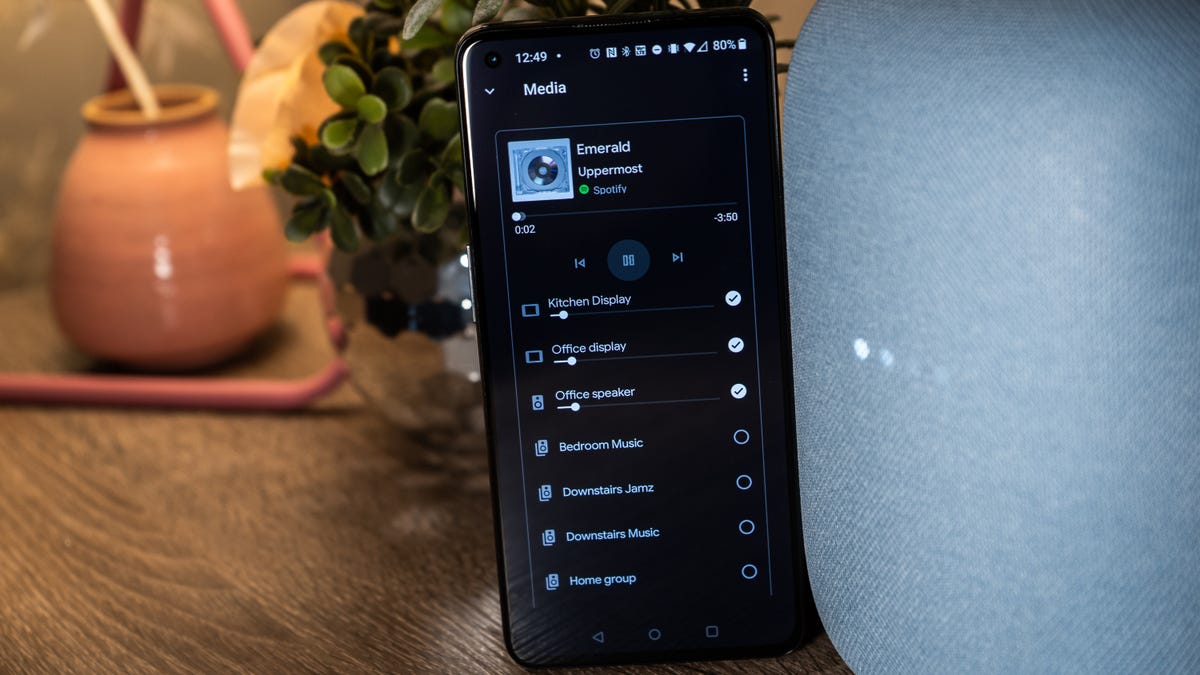
All good things must come to an end, and that includes the ability to use Google’s multi-room casting for seamless audio control, one of the features found to violate patents held by Sonos.
After a trade commission ruled in favor of Sonos yesterday, Google posted to its Nest forums about immediate changes coming to its speaker groups feature. Google is rolling out software tweaks so that its audio casting features don’t violate the five patents that sparked all this.
Here’s the gist: You can no longer adjust the volume on all devices within a Google Cast home group with a simple finger-drag. Instead, you’ll have to individually adjust the volume slider on each of the connected smart speakers and displays within that particular group.
One of the perks of choosing your Android smartphone as the home controller in a Google household is that pressing the exterior volume button would also control the volume on each speaker contributing to the home group. But that’s also going away, and you can no longer use the quick shortcut to turn down the volume.
Google writes that most speaker groups should continue functioning as expected unless you’re using JBL and Lenovo-branded devices, which use a different casting protocol. JBL and Lenovo’s devices need to have firmware version 1.52.272222 or higher to work.
You can check for technical information in the Google Home app by tapping on the device name, then the Settings button in the right-hand corner. You’ll find the firmware listing under Device information. If you feel like your device is missing a firmware update, you can try factory resetting and then linking it back up with your Google account to get it updated.
A small subset of folks will have to install a “Device Utility app” or DUA to receive software updates. If any of your devices fall in that category, you’ll see a prompt pop up, presumably in the Google Home app, to download and install the DUA. That will help ensure your devices stay connected to your home wifi and are running the latest firmware. Set-up of any new Google Home products will also include the installation of the DUA.
People are pissed, if the replies to Google’s post in the Nest forums are any indication. Some folks are even asking for a refund, citing that this takes away one of Google casting’s most friendly features. “This ‘update’ breaks all purpose and functionality of using your devices to listen to music,” writes one forum member. “I am physically disabled and purchased devices specifically so I could control them by voice,” says another.
My house is covered in casting devices (it’s my job!), so I went ahead and tested the multi-room situation myself. The first time I tried it out was on what I’ll call a “legacy” home group I created a long time ago. It includes five speakers placed around my downstairs area. As I was casting music from Spotify, there were no options to control the sound when I pressed the phone’s button, and the Google Assistant claimed that turning down the volume with a voice command was “not available.”
It’ll be interesting to see if more “fixes” get rolled out in the next two months, which is how long Google has before it’s banned from importing devices that violate Sonos patents (which include Nest speakers, Chromecast streaming sticks, and Pixel phones). But the company already had a contingency plan in place—the aforementioned software tweaks—which was approved by the judge who made the preliminary ruling last August, and what we see here is likely a result of all that.
